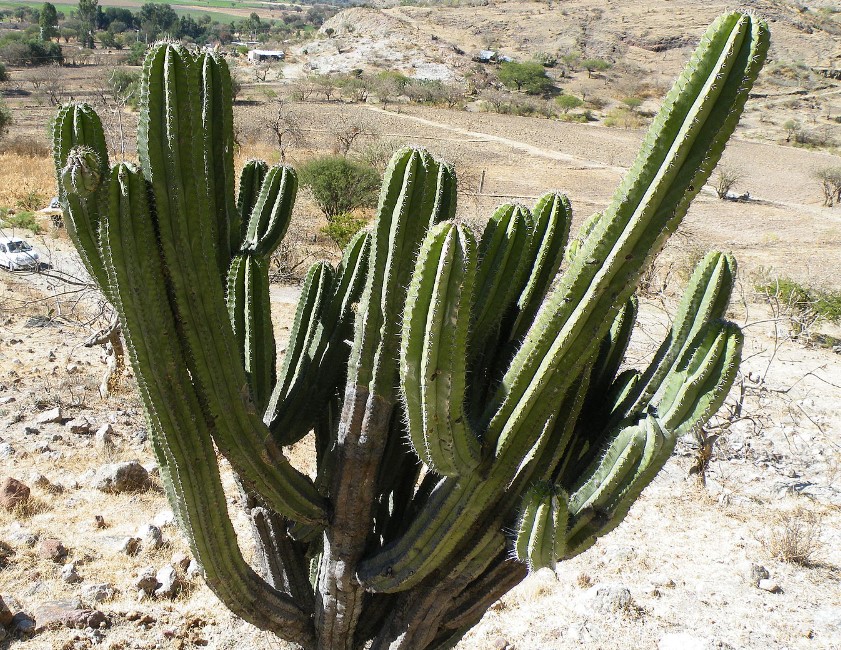Polaskia chende looks like tree cacti, branching terminally to 4 m (13 feet) high with distinct trunks to 80 cm (31 in) high and 25–30 cm (9.8–12 inches) in diameter.
Stems: The Polaskia chende stem is straight or curving slightly, yellowish green, 40–50 cm (16–20 inches) long, and 5-7 cm (2–2.8 inches) in diameter.
Seeds: The seeds are about 1.6 mm long and 1 mm wide.
Ribs: About 7-9, somewhat wavy, separated by wide furrows.
Areoles: The areoles are round, dark, and 2 cm (0.8 in) apart.
Central spines: absent.
Radial spines: The radial spines are 3-6, usually 5, awl-shaped, gray, and 5–15 mm (0.2–0.6 in) long.
Flowers: Usually, flowers are open in the morning, solitary, delicately perfumed, white, to 6.5 cm (2.6 inches) in diameter; pericarpel tubercles are raised, with long golden bristles and hairs. The oblanceolate, mucronate apex of white flowers can have a reddish-purple center stripe on some of them.
Flower Season: Growing in xerophytic shrubland, it blooms from August to January.
Fruits: The fruits are globose, 3.5–4 cm (1.4–1.6 in) in diameter, with clusters of short, thin spines. The fruits occur in December and June.
Elevation: 1,500 to 2,000 meters above sea level.
Distribution: Puebla and Mexico (Tehuacán-Cuicatlán Valley and adjacent Mixteca Alta in the Mexican States of Oaxaca and Puebla)
Synonyms: Cereus chende Roland-Gosselin 1905, Lemaireocereus chende (Roland-Gosselin) Britton & Rose 1920, Heliabravoa chende (Roland-Gosselin) Backeberg 1956, Myrtillocactus chende (Roland-Gosselin) P. V. Heath 1992.
Read More: Ferocactus emoryi (Engelmann) Orcutt 1926
